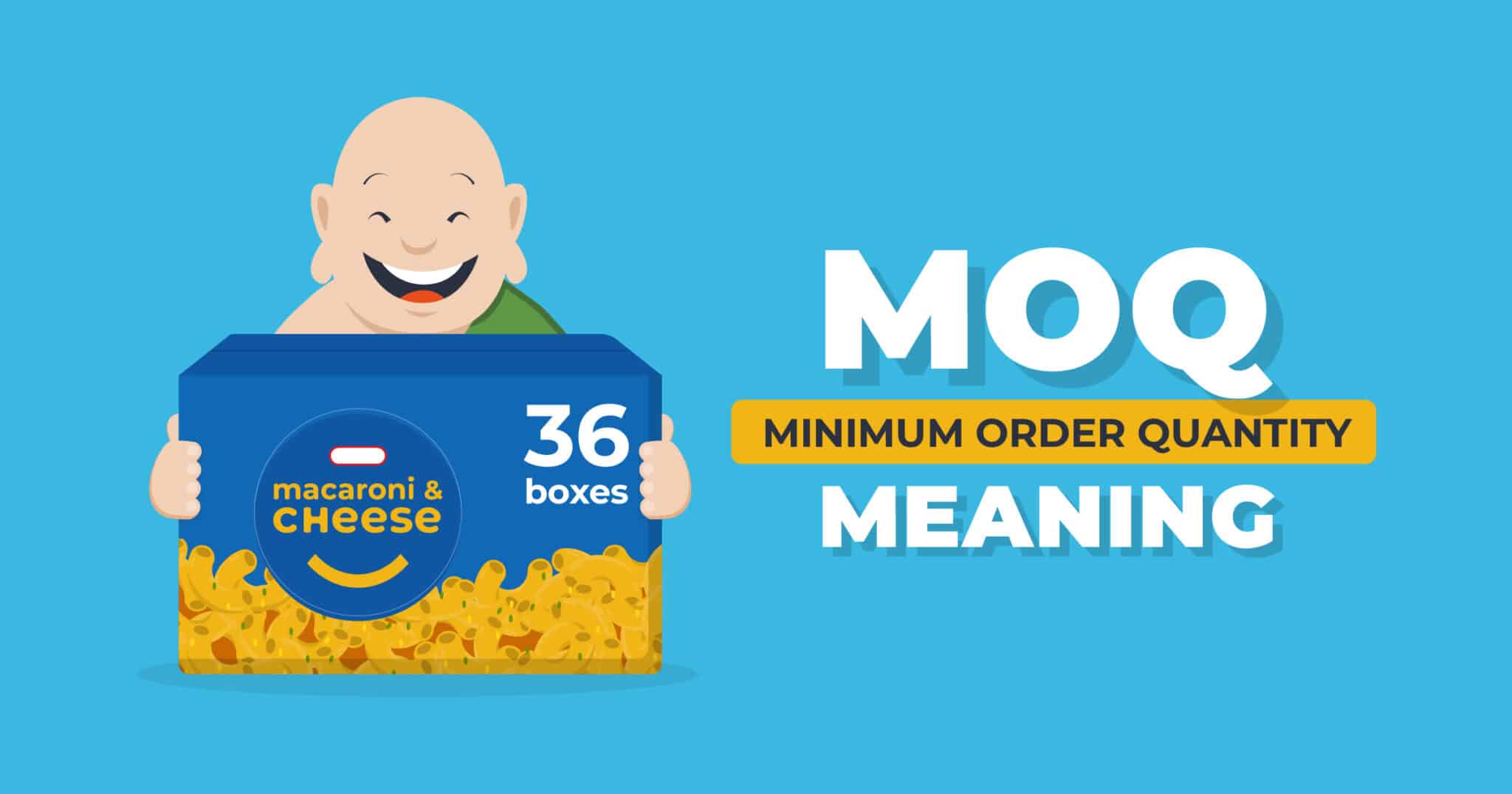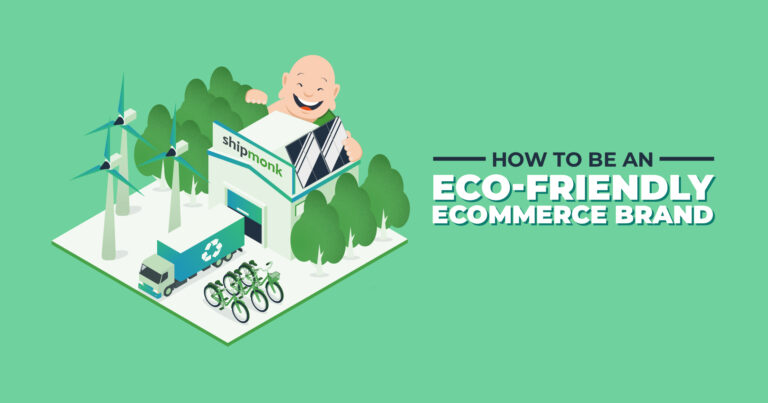What is Minimum Order Quantity and Should My eCommerce Business Set One?
As online shoppers, we see examples of minimum order quantity everywhere. It’s that pop-up in your shopping cart that says, “Add $17.96 to your cart to get free shipping!” It’s the warehouse store that only sells mac & cheese in cases of 36, or toilet paper in packs of 24 mega-rolls. We, as consumers, have grown accustomed to buying in bulk in order to pay less per unit.
For suppliers and merchants, however, setting a minimum order quantity for your goods can mean the difference between losing money and making a profit on each sale. It may sound tempting to force your customers into purchasing in larger quantities, but is it the best way to grow your business?
This article will define minimum order quantity, show you some examples, and help you decide if it’s the right strategy for the type of items you sell online. You’ll have to do the calculations, but we can get you started.
Minimum Order Quantity Definition
MOQ = the smallest quantity of a product a business will sell to any single customer
This simple definition of minimum order quantity applies to any type of business, and there are many types of business in this world: suppliers sell raw materials to manufacturers; manufacturers sell finished goods to wholesalers or retailers; wholesalers repackage and sell finished goods to retailers; still others manufacture and sell their own finished goods directly to customers. Any or all of these businesses may choose to put MOQ restrictions in place.
A cotton grower sells fiber in 500 pound bales to a textile mill. The textile mill sells a minimum order quantity of 100 bolts of fabric to a garment manufacturer. The garment manufacturer sets an MOQ of 2,000 shirts for a wholesaler, who sets an MOQ of 200 shirts for a retailer.
All eCommerce brands may encounter minimum order quantities when ordering raw materials. If they sell their finished goods to retail partners or wholesalers, these buyers will expect a lower price in exchange for their higher order volume. The eCommerce company may have to set an MOQ of their own to maintain profitability.
Why Do Businesses Require a Minimum Order Quantity?
Businesses set MOQs when their costs are so high or their margins are so low on a particular product that they would lose money or see nominal profits producing or selling one unit at a time. That’s when setting a minimum order quantity is imperative. By forcing customers to buy more with each order, a supplier can achieve profitability through economies of scale.
The tricky part is finding that break-even point—the quantity or order level at which their costs are covered, they are making an acceptable profit, and they haven’t priced themselves out of the market. That magic number may be a quantity of 5 or 50 or 5,000, or it may be expressed as a minimum dollar amount per order, but either way it becomes the MOQ.
If a customer can’t or won’t order the minimum quantity, they’ll either have to shop elsewhere or negotiate with the supplier. The supplier may agree to split the order with another customer, or hold a portion of the order for later delivery. But because smaller orders are not profitable, they may not even have the systems in place to handle them. Wholesalers and retailers exist for this very reason, so that buyers can purchase finished goods in various quantities.
Minimum Order Quantity vs. Pricing Strategy
There’s a difference between requiring a minimum order quantity and incentivizing customers to purchase in larger quantities. An MOQ is a long-term decision that must be enforced for the survival of your business. This means you may have to turn some customers away. To incentivize customers to order the minimum quantity, a seller may offer a lower price per unit, or a perk such as free shipping. If it is a premium or custom product, there may be no incentive at all.
Direct-to-consumer (DTC) brands and retailers (other than warehouse clubs) do not typically set minimum order quantities because they cater to millions of customers with different tastes and size requirements. Rather than set minimum order quantities, they set a pricing strategy for each unit to cover their costs. For example, the same store may sell soft drinks in liter bottles, single-serve refrigerated bottles, six-packs, 12-packs, and cases of 24. The price of each “unit” reflects not only the amount of liquid inside, but also the sales volume and the cost and convenience of the packaging. Incentivizing customers to purchase in bulk can have a similar effect to setting a minimum order quantity, but it’s not enforced. If a customer doesn’t want to pay the high price-per-ounce for a refrigerated single serving, they have plenty of other options.
Types of MOQs
- Product Level MOQ
When a manufacturer incurs high setup costs with each order, such as a custom design for a single retailer, they will only make a profit if they can sell a large quantity of that particular item to realize economies of scale. They will set a product level MOQ, or a minimum quantity of that product for each order.
- Order Level MOQ
When the cost of filling the order is high compared to the actual value of the items, a supplier may set an order level MOQ, or a minimum dollar spend for each order. This enables them to cover costs such as overhead, labor and administrative costs, and realize economies of scale by shipping in larger quantities. Order level MOQs are common in resale and wholesale situations to make it worth the selling party’s time.
- Complex MOQs
A complex MOQ has more than one constraint that a buyer has to satisfy when placing an order. A seller will impose a complex MOQ when it has little control over outside costs and can’t make up the difference with a single MOQ on its finished product. The business may face their own MOQ hurdles when purchasing raw materials, or when trying to fill a truck or container to meet shipping constraints. Rather than raise the price of their goods, they will set a complex MOQ that covers these outside costs. For example, they may include a requirement that producing the order uses a minimum amount of that high-priced component. They may also require a minimum quantity of a certain product, a minimum quantity of pieces per order, a minimum dollar amount for the entire order, or a combination of any of these requirements.
Rewards and Risks of MOQ
Required minimum order quantities may have their rewards, but also create risks for both the buyer and the seller.
As you can see, an MOQ creates more advantages for the seller and more risks for the buyer. For this reason, any seller—whether a supplier, manufacturer, wholesaler, or eCommerce brand—needs to carefully consider their customer base before adopting an MOQ. They will likely lose smaller customers and incur new costs by having to market to a new customer base. There may be fewer buyers, and it may be more difficult to reel in the bigger clients, but a seller that is losing money with each order has no choice. For them, the advantages of setting an MOQ clearly outweigh the risks.
The retail buyer who will be selling the goods, on the other hand, usually has the option to shop elsewhere. They may have to settle for a slightly different or lesser quality product, but unless the item is highly customized or one-of-a-kind, they still have a choice. When they encounter an MOQ, they need to consider whether the increased costs of holding inventory will be offset by the savings from purchasing in bulk, and whether they can sell through the inventory before it becomes obsolete.
To help evaluate choices, buyers may calculate an EOQ (Economic Order Quantity), which determines how often and how much of a certain item should be ordered to minimize their costs. Calculating their EOQ using the seller’s MOQ will determine whether ordering the MOQ is a sound financial decision or not. If the buyer has the cash and the warehouse space, and is confident they can sell through the additional inventory, they may actually increase their own profits.
How Sellers Calculate MOQ
Unfortunately, there is no single formula for calculating MOQ that works for every business. Finding that magic number requires a detailed analysis of all the costs that go into producing a single product; this includes everything from raw materials to shipping, overhead, and bookkeeping. Once you know the true cost of that item, you’ll need to estimate sales volume, profitability, the marketplace, and customer demand to arrive at the perfect MOQ. There are dozens of inputs involving every area of your business and they are constantly changing.
If you only sell one product and have lots of time to kill, it may be possible to figure this out on a spreadsheet. But for most companies, leveraging advanced software and technology makes more sense.
Partnering with a tech-enabled 3PL or fulfillment company like ShipMonk will remove the stress from cumbersome tasks. Inventory management software puts many of these numbers at your fingertips, such as storage costs and sales volume. Supply chain management software tracks the cost of inputs such as materials and machinery. Better yet, ERP systems integrate data from all areas of a business, including supply chain management, inventory management, sales and finance. They can track changing costs, order volume and profit margins to help you calculate the minimum order quantity.
The Most Common Variables That Go into Calculating Minimum Order Quantity:
Other MOQ Considerations
Shelf Life
Both sellers and buyers should consider the shelf life of a product before setting or agreeing to an MOQ. Perishable or seasonal goods are generally ordered in smaller quantities because the product has a higher risk of spoiling or becoming obsolete before it can be sold.
Lead Time
Setting a high MOQ means the seller will either have to keep more inventory on hand to fill orders, or not begin production until they get an order from a buyer. It also means the buyer will place orders less frequently. Neither business wants to run out of inventory, so higher MOQs may require longer ordering lead times to minimize the risk of stockouts on either end of the supply chain.
MOQ Takeaways
If you are a supplier, manufacturer, or eCommerce brand that is considering setting an MOQ, you’ll not only have to calculate your costs and profit margin, but you should also take a careful look at the industry in general, your competitors, and your customer base. The biggest risk you take with an MOQ is that you will lose some of your smaller customers. It will also mean shifting your sales and marketing efforts toward larger customers, which may cause some short term difficulties. But if the alternative is going out of business though, it’s clearly a risk you’ll have to take. In the long run it will be the best strategy to maintain profitability and fuel business growth.
If you’re looking for a fulfillment partner that understands these intricacies of the eCommerce world, and knows how to pair advanced inventory management technology with a skilled workforce to yield great results for your brand, contact the ShipMonk team to speak with a fulfillment expert.



